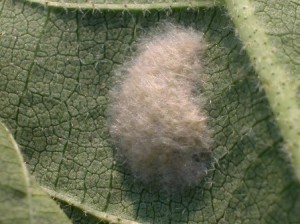Insects are predictably unpredictable, but some general observations for this current week are below.
Cotton
- Plant bugs have mostly diminished, and given the date, even the latest fields should probably only be protected from this pest until the end of the month. With the hot weather in the forecast, many fields will reach NAWF5 +350 DD60s well before then. We will accumulate 25-30 DD60s per day this week.
- A light to moderate bollworm flight is being observed in some areas, but the Bt technologies appear to be doing fairly well so far. Pay special attention to what little non-Bt cotton is out there, and remember that bollworms are more likley to cause injury to WideStrike cotton compared with Bollgard II.
- I’ve observed fall armyworms in a few fields of Bollgard II. The treatment threshold is when 4 or more larvae are found per 100 blooms and/or bolls. An alternative threshold is 10-20 larvae are found per 100 plants. Expect WideStrike cotton to be better on fall armyworms.
Soybean
- With the exception of stink bugs which are building in many fields, there are only limited infestations of other pests being reported.
- Soybean loopers are not posing an immediate threat. Thus far, most the defoliation being observed is from green cloverworm and bean leaf beetles. A few fields are requiring treatment.
- Pay attention to very late soybean fields that will be susceptible and attractive to corn earworm (bollworm). A few larvae are being observed in some, particularly fields in the Mississippi River Bottoms.
Sorghum
- Late sorghum will be highly attractive and susceptible to corn earworm and fall armyworms feeding on the heads. There are a lot more fall armyworms in the system this year. Refer to my previous article for treatment options, https://news.utcrops.com/2014/07/be-on-the-lookout-in-sorghum/
- Sugarcane aphids are building pretty rapidly in some fields, particularly those along the southern border of West Tennessee. However, I’ve had reports of treatable numbers in Haywood and Dyer County. Thus far it appears to be the later sorghum catching the brunt.
- Avoid treating late sorghum for sorghum midge unless necessary. Pyrethroid insecticides will flare aphid infestations.
Pastures
-

Fall Armyworm Egg Mass There have been several questions about what are the egg masses being found on porch canopies, garage doors, etc. These are fall armyworm. This indicates a lot of egg laying activity. Be very alert is pasture grasses and please refer to my previous (link here).

